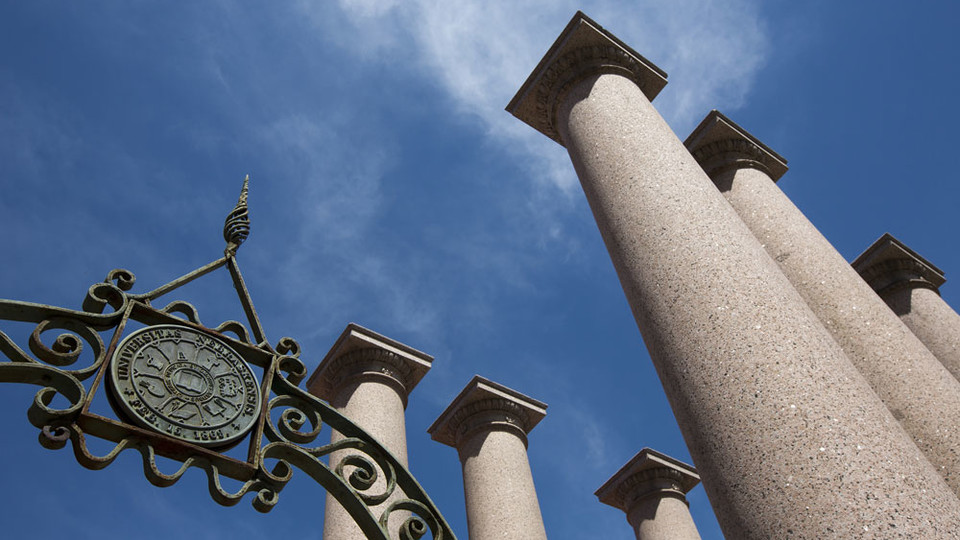· 5 min read
Garrett Klassy’s remarks on LB 962

Good afternoon, Chairman Hansen and members of the Business and Labor Committee. My name is Garrett Klassy (G-A-R-R-E-T-T K-L-A-S-S-Y), and I serve as the Senior Deputy Athletic Director for External Relations at the University of Nebraska-Lincoln. On behalf of the University of Nebraska, our four campuses and 51,000 students, I am here today in a neutral capacity on LB 962. I want to thank Senator Hunt for engaging the University on an issue that is important to our student athletes.
In 2019, the passage of California Senate Bill 2016 opened the door for collegiate student-athletes to profit from the commercial use of their own name, image, and likeness, which currently is prohibited by NCAA rules.
Since then, the University of Nebraska has been engaging with various national partners to explore greater freedoms for student-athletes, particularly in the area of name-image-likeness. And because we compete and recruit students on a national level, we believe that all universities should abide by the same set of rules. Currently, the University is actively involved in conversations with the Big 10 Conference, the NCAA, and Congress to find a federal solution to the name-image-likeness issue.
I believe it is important to clarify that payment for Name, Image and Likeness is a separate and distinct topic from a true pay-for-play model. As the name suggests, a “pay-for-play” model involves an institution directly paying students above and beyond the cost of attendance to compete in intercollegiate athletics. “Name-image-likeness”, on the other hand, involves third parties – usually commercial entities – paying student-athletes to use their personal brand to promote companies’ products or services.
As you consider LB 962, I thought it would be helpful for you to understand some of the many ways in which Huskers Athletics supports our student athletes:
In FY19, Huskers Athletics funded the equivalent of 305 full scholarships for student-athletes, which amounted to more than $14 million for tuition, fees, housing, food, and books.
At UNL, a full scholarship and cost-of-attendance stipend for an out-of-state student-athlete equals over $40,000 per academic year. CBS News recently reported that 2018 college graduates finished school with an average of more than $29,000 in debt. Full scholarship student-athletes may leave Nebraska with zero debt – and some leave with multiple degrees from one of the most esteemed public universities in the world.
To complement their academic experience each of our 600 plus student-athletes receive new laptops upon enrollment for use during their academic career. Other resources include two computer labs, private study rooms, tutoring areas, and private offices for academic counselors. And in 2019, the Graduation Success Rate for Husker student-athletes reached an all-time high of 93 percent.
Our Life Skills program is THE model program in intercollegiate athletics. Through the program, student-athletes have the opportunity to make an impact in the community and prepare themselves for life after college. Outreach activities impacted more than 30,000 Nebraskans last year. Individually, Husker student-athletes average six community and leadership events annually. Other opportunities include the Husker Student-Athlete Career Fair, a Life After Sport Seminar for all graduating student-athletes and numerous leadership platforms.
In 2015, Nebraska established the most comprehensive Post-Eligibility Opportunity (PEO) program in the country. Student-athletes who letter and graduate benefit from one of three post-eligibility opportunities each valued at $7,500. Graduates can either study abroad, complete an internship or begin graduate school within the UNL or the University of Nebraska Medical Center.
Husker Athletics provides the necessary nutrition which virtually eliminates a student athlete’s need to use scholarship money for food. In total during FY19, Nebraska Athletics spent $4.5 million on student-athlete food and related expenses. Husker Athletic’s training table, open to all student-athletes, operates for breakfast, lunch and dinner. We also operate several fueling stations in the teams’ training facilities, which provide grab-and-go nutrition options, before and after practices and workouts.
In FY19, the Nebraska athletic program spent $3.7 million on health care services. The sports medicine department offers a comprehensive health care model to all, at no out-of-pocket expense to them. Also, we continue to cover medical costs after a student athlete has exhausted their eligibility for any injury suffered while competing as a Husker.
In addition to performance gear, Nebraska student-athletes receive additional apparel from the University, which reduces their clothing needs. Student-athletes receive all of the necessary apparel to outfit them for competition, practice and team travel. Secured through an Adidas sponsorship, Nebraska provides more than $5 million annually on clothes for its student-athletes.
The Student Assistance and Opportunity Funds exist to help student-athletes with unforeseen expenses. Both accounts, funded by the NCAA are a resource available exclusively to assist with student-athlete needs. Recent uses of these dollars have included additional clothing allowances, flights home to attend funerals or to be with parents during surgery.
With providing all of the aforementioned resources and services we still remain one of the most fiscally responsible athletic departments in the United States:
Nebraska Athletics is one of the few athletic departments to receive no state, university, or student fee support.
The Nebraska Athletic Department contributes $10,000,000 annually for university academic initiatives and non-student-athlete scholarships.
In recent years, the Nebraska Athletic Department was the only Power 5 Program (65 schools) to report zero debt.
Huskers Athletics is proud of the support we provide to our student athletes, and to the University. Again, we recognize that the “Name-Image-Likeness” conversation is an issue whose time has come and we look forward to continuing to engage in constructive conversations on this critical issue.







